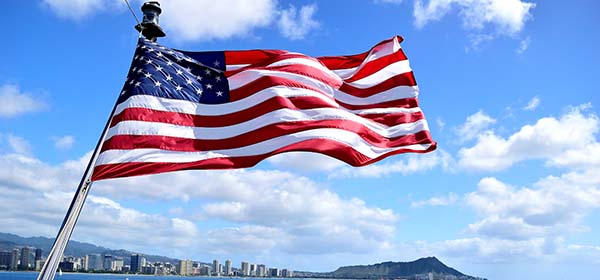
UPDATE : 2024/04/19

UPDATE : 2024/04/22

UPDATE : 2024/04/22

UPDATE : 2023/02/13

UPDATE : 2024/01/17

UPDATE : 2024/01/17
Contents

Foreign nationals wishing to enter the U.S. must obtain nonimmigrant visas to stay in the country temporarily or immigrant visas to become permanent residents. B-visas are required of travelers visiting for tourism purposes and E-visas mainly of travelers visiting for business purposes. Check “Variety of U.S. visa (non-immigrant visa application) and application procedures” for details related to visa application.
Visitors to the U.S. on an E-visa are required to engage in business activities in the following two areas as main purposes.
| ① | Mainly for activities between the U.S. and countries with which it maintains treaties of commerce a company must engage firmly in activities based on practical trade intended to improve and develop for services and technologies. |
| ② | Requiring capital investment in a considerable amount in a company owned in the U.S., and employment in business development, management, or leadership for purposes of growing the company. |
Nonimmigrant visas are issued to foreign nationals intending to spend specific periods in the U.S. to conduct practical activities for specific purposes in fields such as business, the arts, and athletics. Foreign nationals who do not intend to immigrate to the U.S. but will spend a longer period of time than permitted under ESTA (Electronic System for Travel Authorization) must obtain nonimmigrant visas, while those intending to immigrate to the U.S. must obtain immigrant visas. Obtaining an immigrant or nonimmigrant visa requires the submittal of documents such as those certifying the applicant’s situation, purposes for traveling to the U.S., and specific activities in the U.S., along with an interview at a U.S. embassy or consulate general. When applying for a nonimmigrant visa, the applicant will need to declare their intention, and prove the following two matters during the interview with the embassy or consulate general:
| ① | There is a strong relationship between the U.S. and the applicant’s country of residence. |
| ② | That applicant is certain to return to his or her home country or otherwise leave the U.S. after the temporary stay. |
There is a wide range of types of nonimmigrant visas. Be sure to ascertain which type of visa is appropriate for your own purpose of visiting the U.S. and for your occupation prior to applying for a nonimmigrant visa.
| B1 visa | For tourism, visiting family and friends, etc. |
| B2 visa | For business discussions, buying, business training, etc. |
| E1 visa | Mainly for international trade with the U.S. as a resident employee etc. |
| E2 visa | For investors who will reside mainly for investment in a company in the U.S. |
| L visa | For cases of transfer to a company located in the U.S. |
| O visa | For those who possess outstanding abilities in fields such as the arts, education, science, or athletics |
| P visa | For those persons such as artists, performers, or athletes who need to travel to the U.S. for specific purposes |
| I visa | For those members of the media or journalists who will reside in or travel to the U.S. for specific purposes |
| TN/TD visa | For specialized personnel from Mexico or Canada, under NAFTA |
| J visa | For persons who travel to the U.S. for specific purposes to serve in positions such as those of doctors, professors, academics, or teachers (including international exchange visits) |
| F visa | Mainly for students who travel to the U.S. for academic studies, language study, etc. |
| M visa | For vocational training or tours, training, or visits at authorized non-educational institutions or other facilities (not including language training) |
In general, citizens of foreign countries planning to enter the U.S. must first apply for and obtain either a nonimmigrant visa for a temporary stay or an immigrant visa for those who plan to become permanent residents. The U.S. has established Visa Waiver Program (VWP) only for those countries maintaining very close relations with it. Under a VWP, travelers may visit the U.S. for short periods of time without obtaining visas. However, travelers VWP must first apply for ESTA (the Electronic System for Travel Authorization) and obtain an authorization. Those not eligible for a VWP and those planning to travel to the U.S. for other reasons, such as participation in exchange programs or purposes of travel not eligible for a B visa, require nonimmigrant visas. Simply obtaining a visa does not guarantee permission to enter the U.S. in all cases. A visa indicates acknowledgement by a U.S. embassy or consulate general that the applicant is eligible to travel to the U.S. for a specific purpose. Close attention must be paid when applying because entrance to the U.S. may not be permitted in some cases such as discrepancies in or incompleteness of the documents and/or based on the interview with the consulate.
An E visa is for entering the U.S. mainly for business purposes. There are two types of E visas: E1, issued to those engaged in international trade and similar businesses between the U.S. and a treaty signatory nation, and E-2, issued to those making business investments in the United States. Both E-1 and E-2 visas are issued only to nationals of countries that have concluded treaties of commerce with the United States. An E-1 visa could be described as the visa for resident employees engaged in trade, and an E-2 as the visa for resident employees engaged in investment. Family members of a resident employee planning to stay in the U.S. on an E visa may apply for an E visa for family. Eligible family members are his/her spouse and unmarried children under 21 years of age. They can come along or come later to join the resident employee with the E visa.
An E-4 visa for family members must be applied for when a spouse or unmarried child under 21 years of age accompanies a resident employee with an E-1 or E-2 visa to the U.S. However, the following persons do not need to apply for an E-4 visa:
Family members of a resident employee with an E visa may attend elementary school, middle school, high school, college, vocational schools, and other schools in the U.S. on either a family E visa or an F-1 visa. Those planning to travel to the U.S. accompanied by school-age children are encouraged to check the conditions for issue of an F-1 visa in addition to a family E visa and apply for the visa best suited to their situations.
An E visa differs from an immigrant visa mainly in the scope of its restrictions. While an E visa is required when residing in the U.S. mainly for business reasons, it differs from an immigrant visa in that it is subject to the following restrictions:
A holder of an E visa may stay in the U.S. for only a certain period of time authorized by the U.S. Department of Homeland Security and must leave the U.S. to return to his or her home country after his or her business or other duties are complete. A condition of an E-1 visa is that the applicant comes to the U.S. to engage in practical and continual international trade activities between the U.S. and a treaty signatory nation. Conditions of an E-2 visa are that the applicant is coming to the U.S. to grow a business, by leading or guiding a company in the U.S. in which he or she has made an investment of at least a certain level.
A spouse and other family members accompanying a resident employee holding an E visa will be issued family E-4 visas. In principle, a spouse or family members staying in the U.S. on a family E-4 visa may not be employed in the United States. However, such a family member may apply to the immigration department for permission to work after arriving in the United States. There are no restrictions on matters such as the types of work they may perform or the content of their duties. Family members should contact the immigration department if they are interested in working.
https://travel.state.gov/content/travel/en/us-visas/employment/treaty-trader-investor-visa-e.html
| 1 | The applicant for an E visa must have been employed as an executive or manager of the business where he or she works or possess knowledge or skills necessary to company management. |
The applicant for an E-1 visa must be an executive or manager or possess advanced skills or specialized knowledge necessary to business management. Furthermore, the applicant may be asked to explain in detail the reason why his or her skills or specialized knowledge are essential to his or her employer and/or the level of such skills. In many cases, applicants for E-1 visas who have only standard levels of business skills are rejected.
| 2 | The applicant for the E-1 visa must be a national of a country that has concluded a relevant treaty (a treaty of commerce and navigation) with the United States. |
Nationality-related conditions apply to an application for an E-1 visa. If nationals of the country that has concluded the treaty with the U.S. own 50% or more of stock in the company, then it is considered a corporation of that nation. Check in advance to make sure that the company where the applicant will work after entering the U.S. is a corporation of a treaty signatory nation.
| 3 | The company employing the E-1 visa applicant must be in the country that has signed a relevant treaty. |
For example, in the case of the United Kingdom, the applicant for the E-1 visa is a British subject and the company where he or she will work in the U.S. must have British nationality as well.
| 4 | The company must be engaged in international trade, and transactions with the U.S. must account for more than 50% of its trade transactions. |
The company must engage in direct importing or exporting with the U.S., and also more than 50% of its global trading volume must come from transactions with the U.S.
| 5 | The company’s trading volume must be equal to or more than the amount specified by law. |
While a considerable volume of trade with the U.S. is a requirement for issue of an E visa, the necessary volume is not defined clearly. Furthermore, emphasis is placed on whether or not mutually beneficial ties can be expected to develop between the applicant for an E-1 visa and his or her employer, which would generate direct gains and benefits to the United States. Since direct trade with the U.S., rather than indirect trade through other companies, is required, it is recommended that prospective applicants check on matters such as the content and scope of their business in the U.S. in advance.
| 6 | The applicant must have an intention to return to his or her home country after completing his or her business for which the E-1 visa was issued. |
The applicant needs to intend to return to his or her home country, instead of staying in the U.S., after the main business objective is complete.
An applicant for an E-2 visa, known as the investor visa, must satisfy the following conditions and must provide documentation to certify them.
| 1 | If the applicant is an employee, he or she must plan to serve as an executive or manager of the U.S. business or on a position involving specialized knowledge essential to the company. |
If the applicant for an E-2 visa is not an investor him or herself, then he or she must be qualified for employment as an executive or manager at a company established in the U.S. or possess knowledge or skills necessary to company management.
| 2 | The company and the applicant must be from countries that have concluded relevant treaties with the United States. |
The company and the applicant applying for the E-2 visa must be from countries that have concluded treaties of commerce and navigation with the United States.
| 3 | Investors must be in positions of guidance and leadership of their companies |
An investor applying for an E-2 visa must be authorized to make decisions on funding and purposes of the company invested in. If the investor is a corporation, a national of a country that has concluded a relevant treaty with the U.S. must hold more than 50% of equity or of stock with voting rights in management of the company.
| 4 | The investment must be an actual existing company |
The content of the investment must actually exist in the U.S., and it must be demonstrated that it would be beneficial to the U.S. and the treaty partner nation.
| 5 | The investment must be in a considerable amount and must clearly exceed the amount needed to support the livelihood of the investor and his or her family. |
Investors must establish companies in the U.S. and make investments in them that satisfy the provisions of immigration law. Necessary amounts of investment are determined based on factors such as the purpose of the business, its details, the total invested amount, and the initial investment amount.
| 6 | The investment must already have been made or be in the process of being made. |
It must be demonstrated that continual investment is being undertaken and that the investment cannot be cancelled. Cases such as the following do not qualify as investments: ownership of undeveloped land or holding of uninvested funds in accounts as unexplained expenditure.
| 7 | The applicant must have an intention to leave the U.S. after his or her eligibility for an E-2 visa ends. |
The applicant must intend to return to his or her home country or leave for another country, instead of remaining in the U.S., after the termination of the business for which the E-2 visa was intended.Before applying for an E-2 visa, the company and the applicant must ascertain in advance the risk of loss of the invested funds in the business. If all or part of the funds have been lost after investment in the business, then they are recorded as losses and will not be considered as investments. Also, since supplementation of funds through means such as taking out loans with the investment assets as security is not permitted, it is recommended that applicants first consult thoroughly with investment professionals and confirm all points requiring caution when making investments.
UPDATE : 2023/02/13